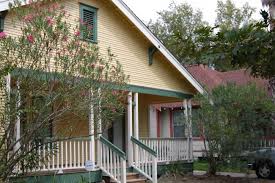There may come a time when your commercial building will start experiencing different issues that you need to fix as quickly as possible. One common building issue that most commercial buildings experience is inadequate attic ventilation. You have to know that attic ventilation is essential because it prevents excessive heat and moisture from entering inside the building.
If that happens, you can expect everyone inside the building to feel extreme discomfort. There is also a high chance that the commercial building’s overall integrity will degrade, so you have to ensure you provide attic ventilation. Even building contractors will recommend that you have one to achieve quality attic ventilation during the construction process.
What Happens to Commercial Buildings Without Proper Attic Ventilation?
When you have a newly built commercial building, you think that you can let a day pass by without the need to check your structure. What makes it even worse is that your building lacks proper attic ventilation because your contractor forgot to include it during the construction planning. That can lead to severe issues that will make any commercial building owner pay a lot of money to do the repairs. Well-known problems regarding lack of attic ventilation include the following:
1. Increased Building Temperature:
During hot seasons, ensure that you keep your commercial building cool at all times because the extreme heat will get to anyone. Fortunately, you have HVAC systems to provide and circulate cool air around the building, ensuring everyone can do their daily activities comfortably.
However, poor attic ventilation might mess with your HVAC system because the outside heat can slowly get inside your building. There’s a possibility that technicians placed several HVAC system components on the attic, and the heat can slowly cook and damage those components. Not only will you need to pay to get proper attic ventilation, but you also have to pay for the damaged building components. You can protect building components inside attics by installing ceiling and attic access doors and panels.
2. Lowered Building Temperature:
Attic ventilation is crucial not only during the summer but also during cold seasons. When you turn on your heating devices and appliances inside your building, the heat will climb up into the attic and cause the snow to melt at the top of the roof. Some of the melted moisture will eventually get trapped inside the attic.
You need to know that commercial buildings usually have wood materials used to create attics, and moisture can destroy the wood over time. You might start to notice water droplets forming on the ceiling, either from the HVAC system or the humidity coming from the attic.
3. Increased Energy Consumption:
When you want to cool or warm up your commercial building, you need the assistance of appliances to achieve that. An HVAC system is an important feature that every commercial building needs because it can provide cooling and heating. Most of the time, it functions perfectly during typical weather, cooling the building’s inside for hours until people go home.
The only downside with HVAC systems is they tend to consume a lot of energy when you want them to work twice as hard because it’s not cooling or heating the building enough. And when systems consume tons of energy, that can significantly impact your energy bills. Fortunately, you can avoid this problem if your building has proper attic ventilation.
Best Ways to Achieve Proper Attic Ventilation
Since you now know the dangers of not having proper attic ventilation, you need to learn about the different ways you can ventilate your attic efficiently. Some attic ventilation methods include:
- Installing Ridge Vents: One effective way of ventilating your attic the right way is by installing ridge vents. It’s a type of attic ventilation system that contractors install at the peak of the building’s sloped roof, allowing humid and warm air to escape and not get trapped inside the attic.
- Installing Turbine Vents: Another vent type most commercial buildings use, specifically restaurants, are turbine vents. They don’t need electricity to run since they operate using power from the wind. The circular fan installed at the top spins because of the wind, and the fan’s design sucks out and disperses the warm air within the attic.
- Installing Soffit Vents: If you don’t want anything protruding on your commercial building’s roof, you always have the soffit vents as another option. Contractors install them under the eaves of your building’s roof, and they work by letting in natural air inside the attic. You can also say that any person can breathe the air inside the attic because of the ventilation.
Never disregard attic ventilation because it will affect the other factors of your commercial building. With proper attic ventilation, you achieve reduced energy consumption, balanced building temperature, and avoid experiencing attic issues for a long time.

Leave a Reply
You must be logged in to post a comment.